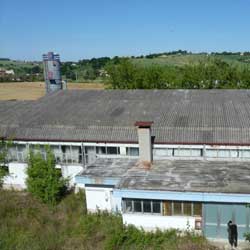Definitions and Information
- Home
- Definitions and Information
ASBESTOS QUALITY
M.C.A. in a Compact Matrix: hard materials that can only be crumbled or reduced to powder using mechanical tools (milling machines, drills, etc.)
First and foremost, asbestos has considerable sound-absorbing qualities. This property made it particularly useful in acoustic insulation, helping create quiet and comfortable environments by reducing external noise.
One of the most recognized qualities of asbestos is its resistance to acids. This chemical resistance made it irreplaceable in certain industrial applications where materials are exposed to aggressive chemicals.
Moreover, asbestos is exceptionally resistant to high temperatures and fire. This ability to resist combustion meant that asbestos was widely used as a fireproofing material, providing safety in contexts where fire risk was a primary concern.
Its ability to blend with other materials in the form of fabric, paste, or pressed further extended its range of applications. Whether it's fire-resistant fabrics or construction components, asbestos showed remarkable versatility.
We must not forget about its electrical resistance. In an era dominated by technology and energy, asbestos also found its place in electrical applications due to this characteristic.
The spinnability of asbestos made it suitable for the production of yarns and fabrics, while its flexibility ensured that, despite its strength, it could be worked and molded into a variety of shapes and structures.
ASBESTOS USAGE
Let's start with the world of construction. Who among us hasn't heard of asbestos wall linings and suspended ceilings? These applications took advantage of asbestos's ability to provide thermal protection and sound absorption, ensuring comfortable and safe indoor spaces.
In the industrial and artisan sector, asbestos was often used in roofing. Due to its resistance to fire and high temperatures, these roofs protected the structures and the goods themselves from potential damages.
Vinyl-asbestos flooring was another common use of asbestos in construction. Offering durability and ease of maintenance, these floors were ideal for high-traffic areas.
Another fundamental application was in the lining of pipes for heating systems. Asbestos ensured that the pipes remained insulated, minimizing heat loss and protecting other structures from their temperature.
In the industrial realm, it was common to see asbestos in boiler seals, ovens, and insulation. These applications leveraged asbestos's resistance to thermal extremes, ensuring the safety and efficiency of facilities.
Flues, tanks, and gutters often contained asbestos as well. Its durability and resistance to the elements made it ideal for these external purposes.
Finally, even in our domestic environments, asbestos found its place. It was present in ovens, stoves, and boilers, providing a protective barrier against fire and keeping our homes safe and warm.
Where can asbestos be found?
In residential buildings and condominiums, asbestos can often be found in various applications.
In industrial and artisan environments, asbestos was frequently used for its resistant and insulating properties.
Even in the agricultural sector, asbestos had its uses.
Many school buildings constructed before asbestos restrictions might contain the material in various forms.
Asbestos was commonly used in chimneys for its heat resistance and to prevent potential fires.
Both in residential and industrial contexts, tanks intended to contain hot liquids or for irrigation could be insulated with asbestos to maintain the temperature and prevent thermal dispersion.
Various types of asbestos-cement sheets
Straight corrugated sheets: These are among the most common and are easily recognizable by their wavy profile. They were widely used for roofing of buildings, sheds, and other structures, thanks to their ability to provide good protection against external elements, while at the same time maintaining fire resistance. Their wavy shape not only gave them a distinctive aesthetic look but also enhanced the structural strength of the sheet.
Curved corrugated sheets: Similar to straight corrugated sheets, these sheets have a curvature that makes them suitable for roofs with specific architectural needs or for structures like silos and towers. Their curved shape offers a different aesthetic profile and can be used to create a variety of shapes and structures.
Magnum sheets: These are larger asbestos-cement sheets, often used in contexts where one desires roofing or cladding with fewer visible joints, or where larger sheets are required for structural reasons. They offer the same protective properties as other asbestos-cement sheets, but their larger size may make their installation and maintenance slightly different.





